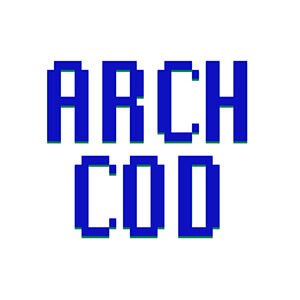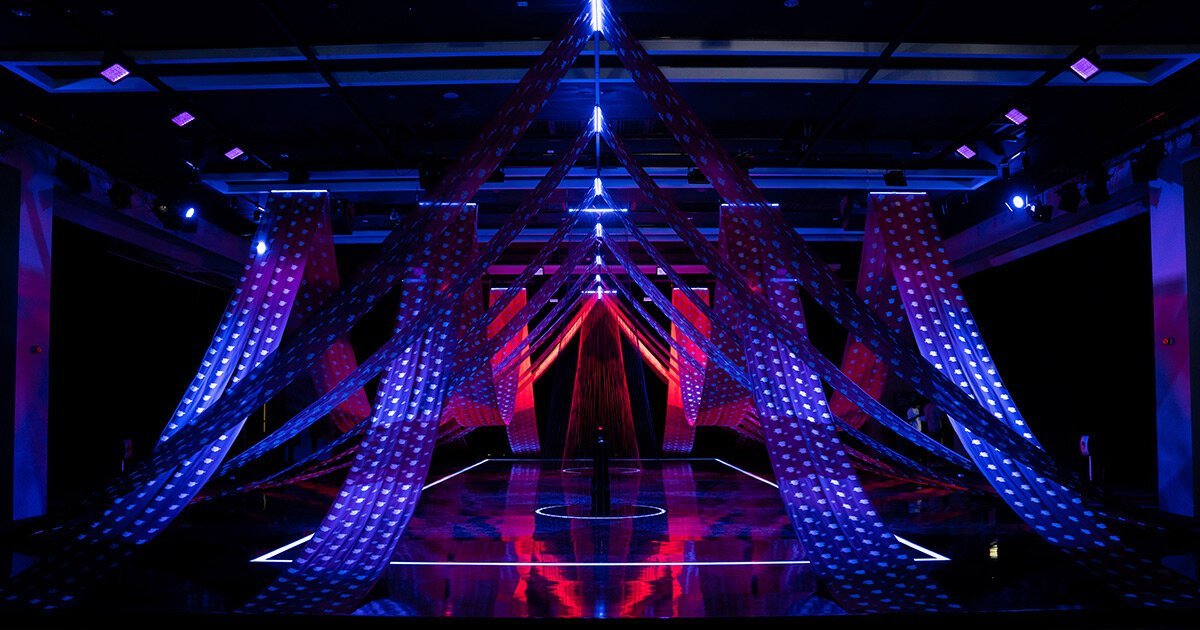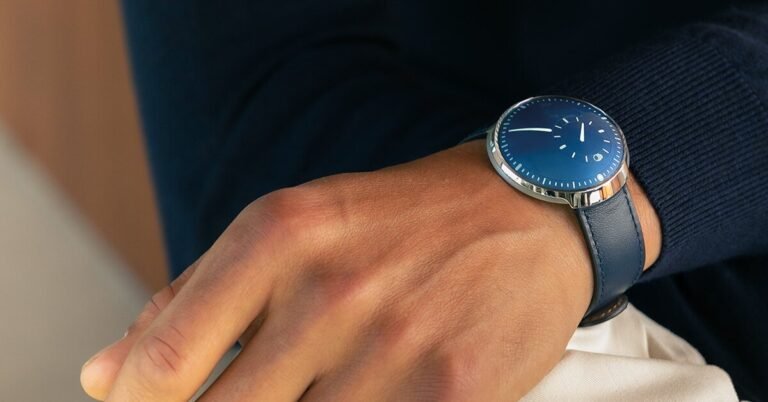detour 2021 returns with interactive exhibitions, workshops & seminars
themed ‘use(fu)less, detour 2021 hosts interactive exhibitions both physically and virtually
a celebration of design in hong kong, the annual detour festival returns for 2021 at PMQ – right in the heart of the city’s soho district. themed ‘use(fu)less’, the event invites visitors through rudimentary concepts, encouraging the audiences to actively rethink the very basic functions of design. the collaborative effort between local creative shin wong with trilingual design’s chris tsui and adonian chan links the virtual with the physical through interactive exhibitions, seminars, dialogues and workshops.
to register to the 2021 design festival and attend workshops and dialogues for free register through here!
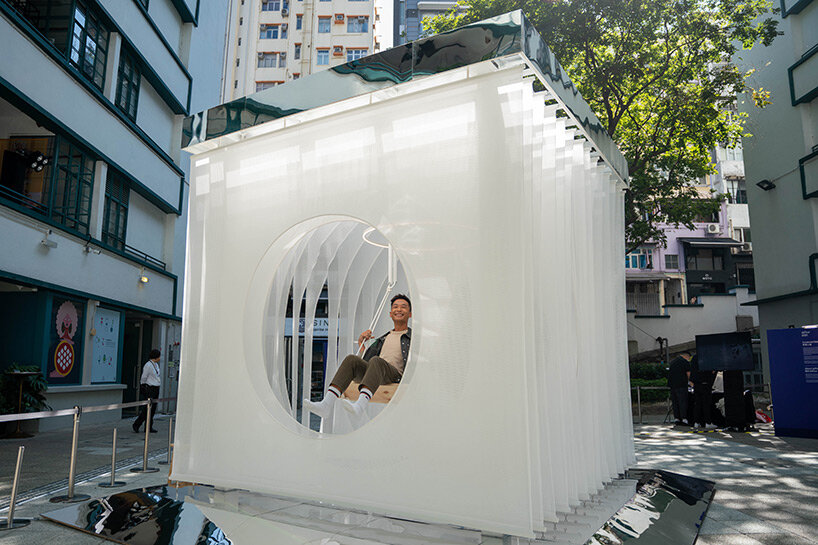
by cynthia leung: ‘the swinging void’ invites visitors to breathe and experience the useful/uselessness of space-time. using the basic elements with which we are born—time, space, light and our bodies—the piece takes simple geometric forms to carve out solitary, intimate, private experiences with a sense of duality.
running from 26 november to 12 december, detour 2021 is divided into three main exhibitions presented via 37 workshops and 11 design dialogues available to the public for free. including both local and overseas talent, the festival boosts a curated line-up of exhibitions, talks, debates and networking events, inviting both the public and professionals to engage and experience the many perspectives of design.
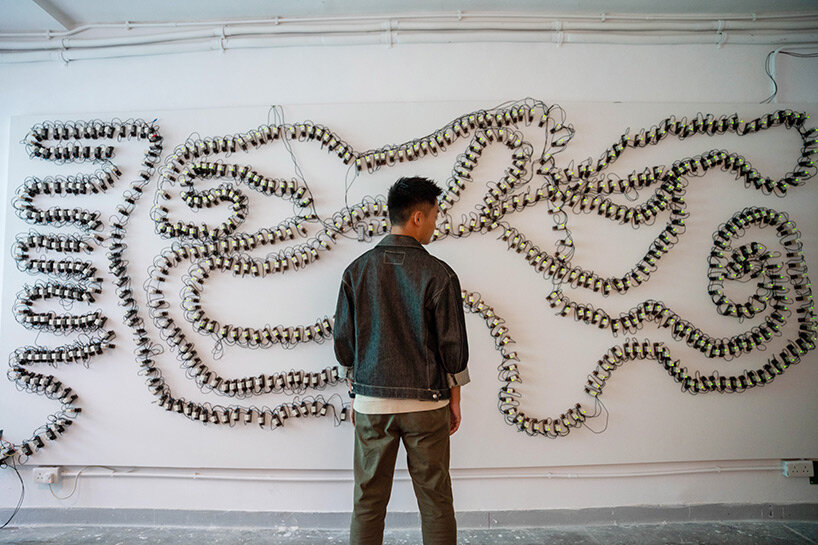
by wong chun hoi: circuit #1is a realization of a schema of monotonous repetitive circuit, using as many relay switch units as possible to bridge a sequential extension of cables repetitive circuit
explore exhibitions virtually at detour
in order to attract design enthusiasts near-by and afar, all exhibitions are available in both physical and virtual formats. accessed through the website, each artwork and installation is broken down into an explanation and an audio track. the recorded clip can be paused, as well as marked with the points that the listener feels are useful or useless. additionally, in order to increase virtual performance and to keep all digital visitors just as engaged, each design dialogue can be found online and replayed at any point and pace through a youtube link. with such interactive features, the festival successfully brings cross-media interaction to a wider audience.
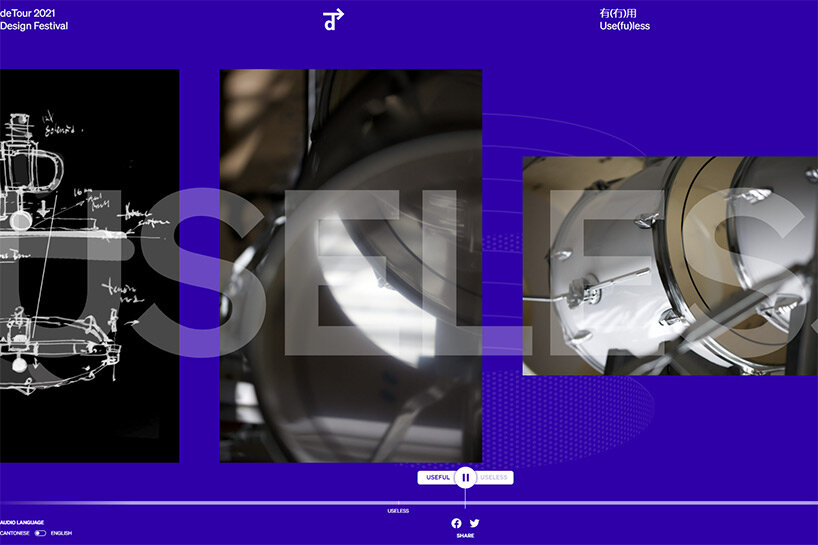
online, each exhibition has its own an audio track. the recorded clip can be paused and marked with the points the listener finds ‘useful’ or ‘useless’.
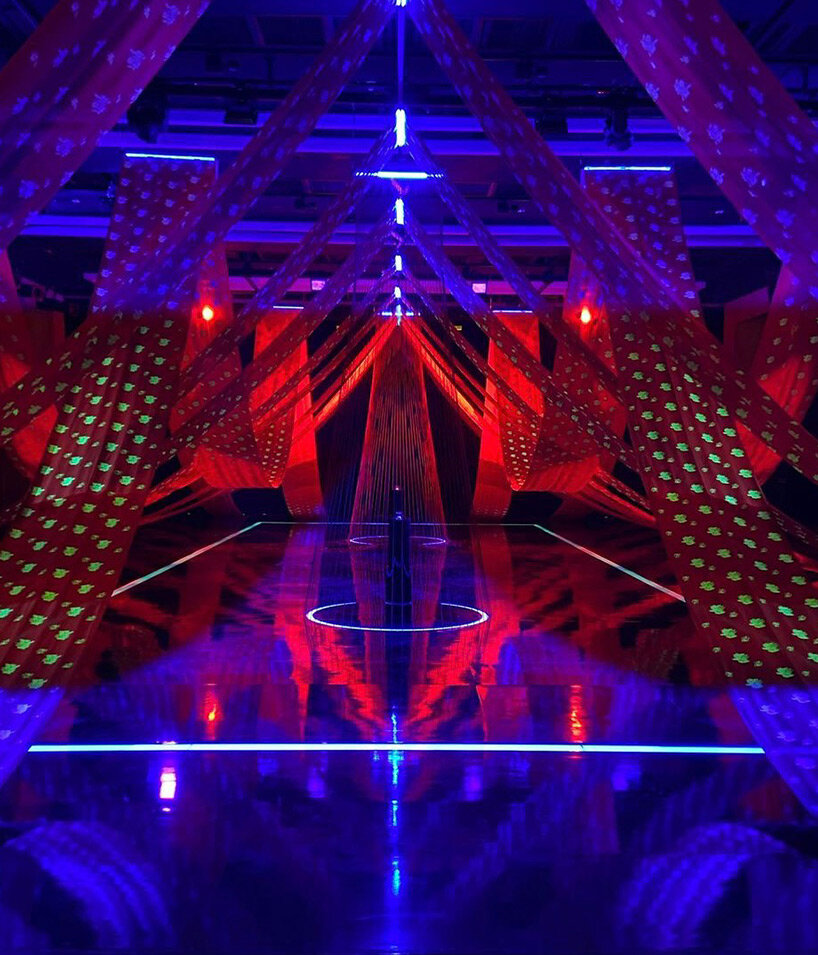
by sputniko! in international collaboration with napp studio & architects: ‘red silk of fate – the shrine’ is silk that glows and emits oxytocin, a social-bonding “love” hormone, is woven into intertwining fabrics
there’s a single common symbol that ties together chinese, japanese and korean mythologies and that’s the ‘red silk of fate’. japanese/british artist sputniko! collaborates with napp studio & architects to reimagine the almost magical silk thread. backed by diffused lighting to mimic the soft glow of moonlight, guests are encouraged to admire the ornate floral patterns and reflect on the meaning of emotion and connection during the time of social distancing as innovative biotechnology grants new meanings to time-honored tales.
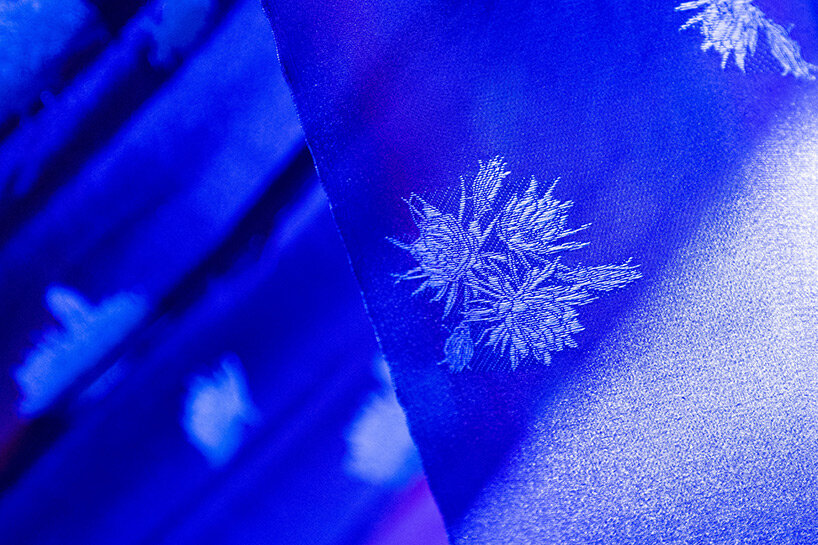
close-up detail of the red silk of fate fabric
the shrine is made of fabrics woven with glowing red silk and other color-engineered silks. designed by kyoto-based masaya kushino, the intertwining fabrics are woven in coded patterns revealed only under blue (moon) light, while the colors are visible through the lenses offered on-site.
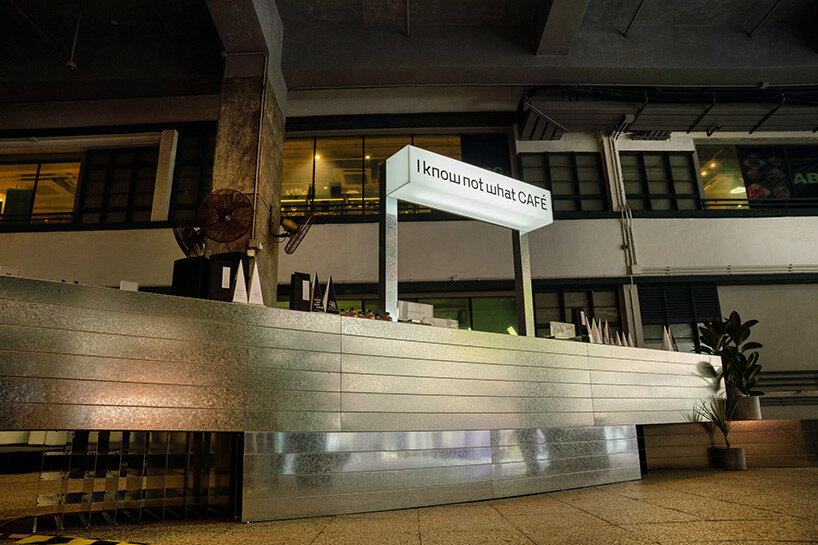
dr li hong ting x designer renatus wu cheuk-pan: a café; an experiment; a performance. in this work, audiences (customers) appreciate (or participate) by simply buying a cup of joe, just as they do in any café.
as part of the four design installations that present the power of collaboration, ‘I know not what CAFÉ’, designed by dr li hong ting from ‘local initiative corrupt the youth’ and local designer renatus wu, renews the ordinary coffee shop experience. the traditional model flips and brings design to the forefront to demonstrate how the subtle function of spatial design can shape both one’s perspective as a whole.
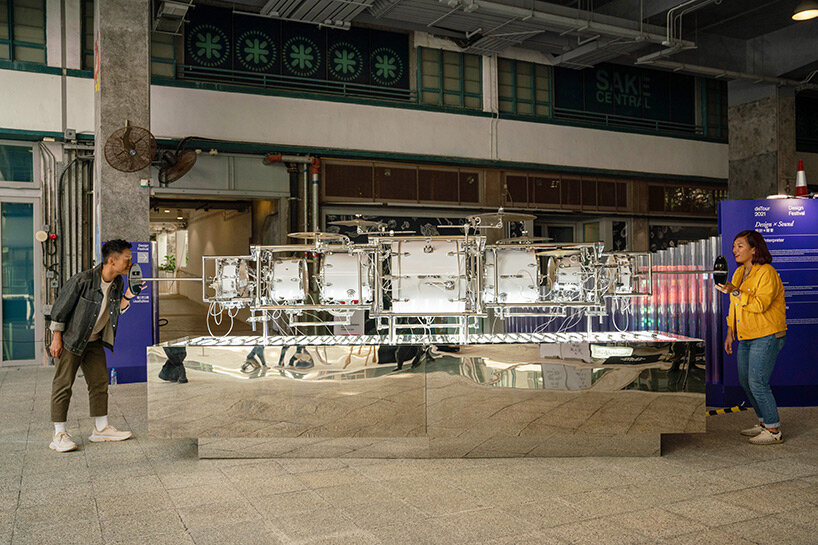
this sound installation records casual dialogue and transposes into a series of sounds and rhythms performed by a band of musical instruments that repositions everyday conversation into melodic musicals.
just like a piece of virtuosic music, language has its own rhythm and beat. with ‘the interpreter’, the listener notices a change in languages in prosodic patterns: english, for example, is stress-timed, meaning some syllables are longer; others shorter. cantonese, on the other hand, is syllable-timed, with syllables all of equal lengths; introducing an unmistakable sense of rhythm in every conversation.
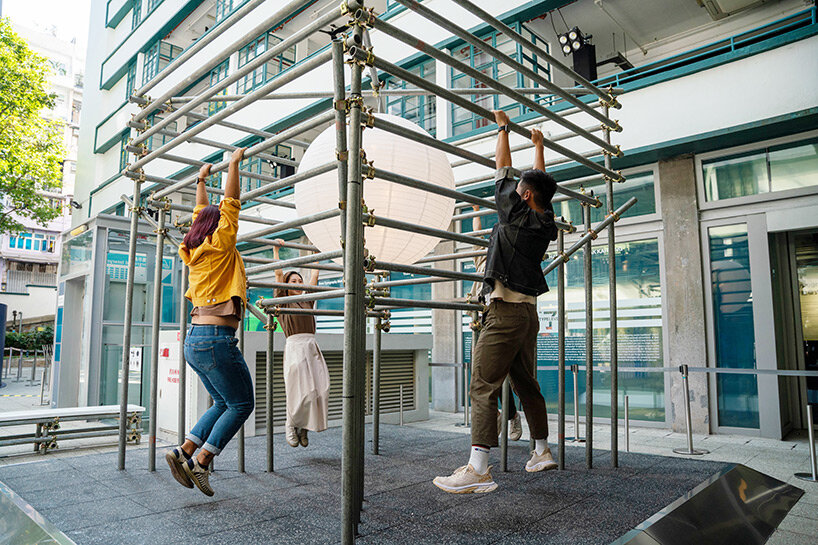
designer, match chen: This experimental installation explores the power of companionship and encouragement: is climbing with others more productive than silently enduring the sweat and pain on your own?
hong kong rock climbing athlete, au chi fung, joins sustainable designer, match chen, in the creation of ‘strong hold pavilion’, an experimental installation that explores the effectiveness of team camaraderie and verbal motivation. the growing popularity of bouldering has opened up new avenues for a deeper understanding of the sport. indoor bouldering, for example, relies on more conversation and communication of discussions regarding climbing routes and techniques in comparison to outdoor climbing. more importantly, it allows encouragement that can effectively
motivate climbers to push further.
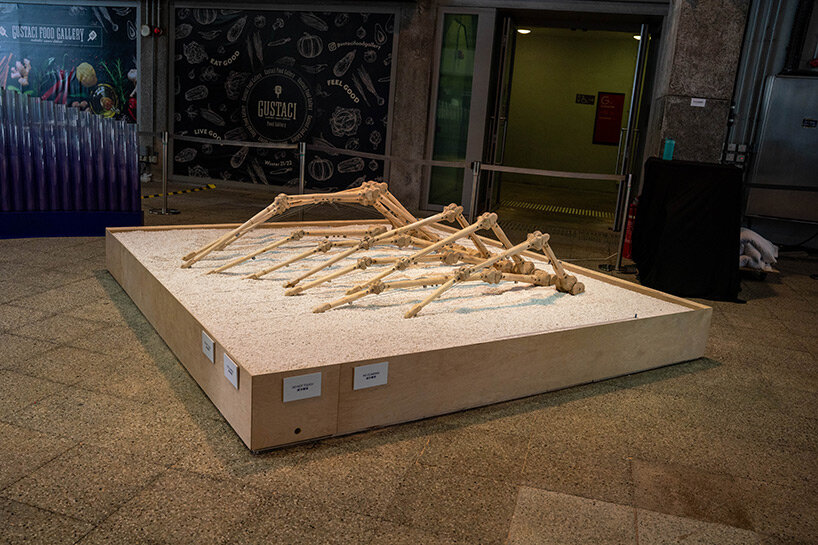
‘elder’ presents a moving art installation that asks, ‘can we replicate function shapes of bones in design?’
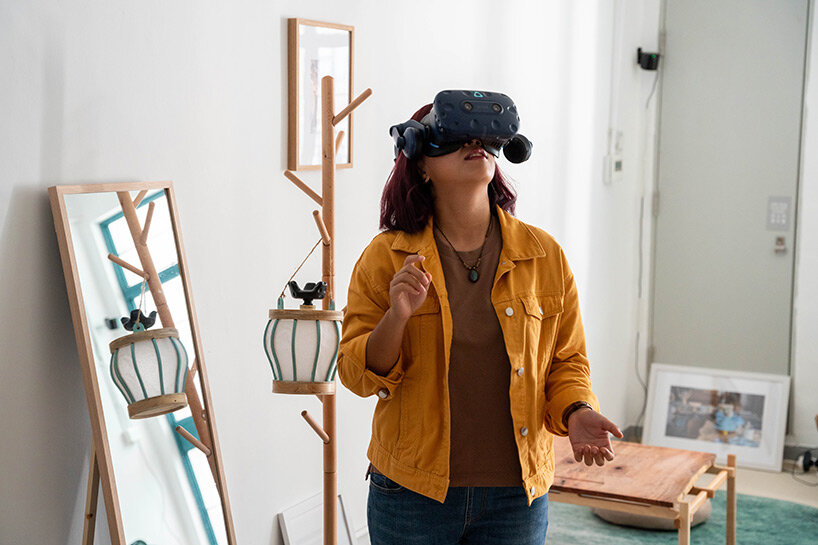
redefining the meaning of a traditional workspace, ‘work in the woods’ reimagines a space that is intuitive and physical to transform banal working routines.
with over 120 design proposals received, detour 2021 extends to design students. the selected 10 exhibitors cover an extensive range of concepts including living environment, technology, interpersonal relationship and spatial design. one of the highlights is ‘elder’. designed by JONO craft space and inspired by human bones, the installation reimagines the basic framework of the human figure through the lens of precision manufacturing borne out of the industrial revolution.
‘work in the woods’ marks the second highlight, ideated by three architects: anson kwan, jackie cheung and
ryan tung. the work subjects its viewer to a futuristic look into a mixed work-life reality in hong kong’s micro apartments. inspired by the age of the COVID-19 pandemic, changing realities have prompted us to reassess how we live in the future, with a growing desire to work from home.
